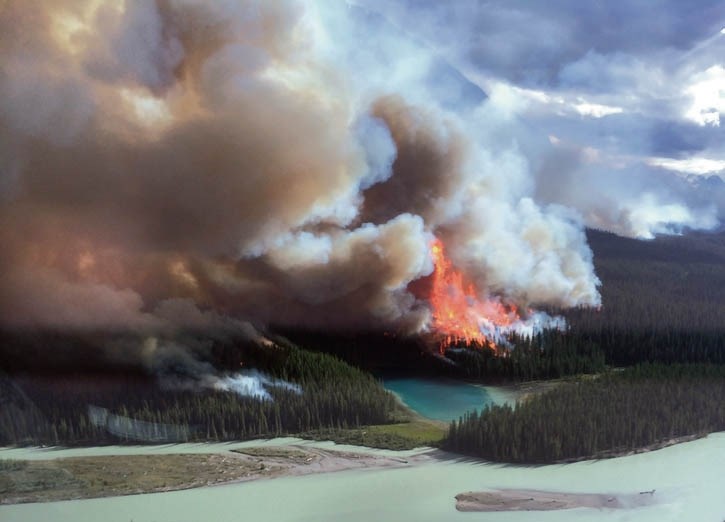Officials with the province and Banff National Park are saying the Spreading Creek wildfire is an example of a good news story when it comes to biodiversity and fire management.
Dave Smith, Parks Canada’s incident commander on the ground, said the area burned by the now-contained fire was set for prescribed fire in Parks’ fire management plan.
“It is very much a good news story from a couple of points of view,” Smith said. “The first one being that almost all forests in Banff National Park, including this area, are fire-dependent forests, so they do need fire to recycle nutrients to ensure good forest health and increase biodiversity.
“As well, what we have is pretty much a valley-side to valley-side fire guard.
“We do know we could keep a fire from rolling out of the park and into Alberta at this point along the David Thompson Highway or David Thompson corridor, so from an ecological point of view and a fire management point of view, this does help my colleagues in the Lake Louise, Yoho, Kootenay field unit quite a bit.”
Richard Horne, provincial wildfire information officer, agreed the blaze benefits the area ecologically and provides a fire guard for the region.
“We are looking at this fire as having a positive benefit to a forested area in that part of the province,” Horne said. “It is a fire-dependent forest – this will lead to a much healthier forest down the road.”
Horne said the fire is classified as held and with over 100 firefighters, four helicopters and heavy equipment on the ground, it is not expected to go beyond its current boundaries.
As of Wednesday (July 23), the wildfire was 8,950 hectares in size – bigger than the city of Red Deer – with approximately 2,300 located within Banff National Park.
Smith said operations in the park are at the “mopping up” stage, with crews working the edges to ensure containment until the fire burns out completely.
“We are at what we call a mop-up operation, so we have a couple of sectors along Highway 93 and up the drainage, one of which is a prominent drainage directly south of the old Saskatchewan River Crossing warden station, which is where the fire was held,” Smith said. “We are basically going along the edge of that and putting all fire out. Any fire that is burning in the middle of the fire really doesn’t have anywhere to go.
“As long as we can control the edges, the flanks of the fire, and get them out before the weather turns hot again, we feel pretty confident we can keep this fire to the size it is right now.”
No more delays are expected along Highway 93 from the fire and a forest closure in the Rocky Mountain House area has been lifted.
The fire was also very hot and intense, which Smith said could be a class five or six fire as it basically burned 90 per cent of the smaller branches and needles off all the trees.
“There is quite a bit of ash or deep ash that we call ash pits as well and all those are indications of a high intensity fire and I would say a moderate severity fire,” he said. “When we talk about severity, what we are talking about is how deep the fire burns into the ground.
“There is some significance to that indeed, but the proof will be in the pudding next year when we start to see recovery and we start to see how easy things recover or if things are harder to recover.”




